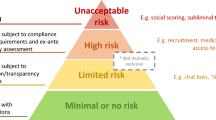Abstract
In enterprise integration, one of the most complex tasks is to map elements of various interfaces to each other. These interfaces often transport data in different ways. This means that some form of data transformation is needed. We present an approach where structural and semantic models of the interfaces can be used together to automate or semi-automate this otherwise tedious and error prone manual process. Some of the possible criteria for interface element mapping are shown, along with semantic conflicts and how they are detected and resolved. We also present a prototype tool, including an overview of its architecture, that enables us to test our approach and have a real-world runnable implementation that is deployable on an enterprise service bus runtime. Finally, we show how some of the steps in the mapping and conflict resolution process could be made configurable by the user, making the integration developer agnostic with respect to the technical implementation of the involved systems.



Similar content being viewed by others
Notes
Forrester Research “Reducing Integration Costs”, December 2001.
Resource Description Framework; https://www.w3.org/standards/techs/rdf.
OWL-S: Semantic Markup for Web Services; https://www.w3.org/Submission/OWL-S/.
All studens involved in the experiment study at the University of Novi Sad, Faculty of Technical Sciences, Chair of Informatics; http://informatika.ftn.uns.ac.rs.
Ontology source ommits namespace and imports for space restriction reasons.
There is no built in way in OWL to represent part-whole relationships. When making an ontological model of a system one would select one of the available mereology ontologies or develop their own. For our purposes of testing the automatic matcher, we have used the W3C working draft available at http://www.w3.org/2001/sw/BestPractices/OEP/SimplePartWhole.
OSGi is a set of specifications that define a dynamic component system for Java; https://www.osgi.org.
Apache Jena framework: http://jena.apache.org/.
Simple Object Access Protocol; https://www.w3.org/TR/soap.
Business Application Programming Interface, a way for providing access to processes and data in SAP a system such as R/3.
References
Al-Baltah IA, Ghani AAA, Ab Rahman WNW, Atan R (2014) Semantic conflicts detection of heterogeneous messages of web services: challenges and solution. J Comput Sci 10(8):1428
Vuković Ž, Milanović N, Vaderna R, Dejanović I, Milosavljević G (2015) SAIL: a domain-specific language for semantic-aided automation of interface mapping in enterprise integration. In: Ciuciu I, Panetto H, Debruyne C, Aubry A, Bollen P, Valencia-García R, Mishra A, Fensel A, Ferri F (eds) On the move to meaningful internet systems: OTM 2015 workshops. Lecture Notes in Computer Science, vol 9416. Springer, pp 97–106. doi:10.1007/978-3-319-26138-6_13
Chalmeta R, Pazos V (2015) A step-by-step methodology for enterprise interoperability projects. Enterp Inf Syst 9(4):436–464
Charalabidis Y (2014) Revolutionizing enterprise interoperability through scientific foundations. IGI Global
Gagnon M (2007) Ontology-based integration of data sources. In: Information Fusion, 2007 10th international conference on, IEEE, pp 1–8
Goh CH (1996) Representing and reasoning about semantic conflicts in heterogeneous information systems. PhD thesis, Citeseer
He W, Da Xu L (2014) Integration of distributed enterprise applications: a survey. IEEE Trans Industr Inform 10(1):35–42
Izza S, Vincent L, Burlat P (2006) A framework for semantic enterprise integration. In: Interoperability of enterprise software and applications, Springer, pp 75–86
Kovanovic V, Djuric D (2012) Highway: a domain specific language for enterprise application integration. In: Proceedings of the 5th India software engineering conference, ACM, pp 33–36
Kutsche R, Milanovic N, Bauhoff G, Baum T, Cartsburg M, Kumpe D, Widiker J (2008) Bizycle: Model-based interoperability platform for software and data integration. Proceedings of the MDTPI at ECMDA 430
Leicher A, Busse S, Süß JG (2005) Analysis of compositional conflicts in component-based systems. Software composition. Springer, Heidelberg, pp 67–82
McAffer J, Lemieux JM, Aniszczyk C (2010) Eclipse rich client platform. Addison-Wesley Professional
McGuinness DL, Van Harmelen F, et al (2004) Owl web ontology language overview. W3C recommendation 10(10):2004
Millham R (2014) Integrating heterogeneous data for big data analysis. Handbook of Research on Cloud Infrastructures for Big Data Analytics
Milosavljević G, Filipović M, Marsenić V, Pejaković D, Dejanović I (2013) Kroki: a mockup-based tool for participatory development of business applications. In: IEEE 12th international conference on intelligent software methodologies, tools and techniques (SoMeT 2013)
Naiman CF, Ouksel AM (1995) A classification of semantic conflicts in heterogeneous database systems. J Organ Comput Electron Commer 5(2):167–193
Parsia B, Sirin E (2004) Pellet: an owl dl reasoner. In: Third international semantic web conference-poster, vol 18
Ram S, Park J (2004) Semantic conflict resolution ontology (scrol): an ontology for detecting and resolving data and schema-level semantic conflicts. IEEE Trans Knowl Data Eng 16(2):189–202
Shearer R, Motik B, Horrocks I (2008) Hermit: a highly-efficient owl reasoner. In: OWLED, vol 432, p 91
Sleiman HA, Sultán AW, Frantz RZ, Corchuelo R (2009) Towards automatic code generation for eai solutions using dsl tools. In: JISBD, pp 134–145
Stoutenburg S, Obrst L, Nichols D, Franklin P, Samuel K, Prausa M (2007) Ontologies in owl for rapid enterprise integration. issues 6:7
Author information
Authors and Affiliations
Corresponding author
Rights and permissions
About this article
Cite this article
Vuković, Ž., Milanović, N., Vaderna, R. et al. Semantic-aided automation of interface mapping in enterprise integration with conflict detection. Inf Syst E-Bus Manage 15, 305–322 (2017). https://doi.org/10.1007/s10257-016-0326-7
Received:
Revised:
Accepted:
Published:
Issue Date:
DOI: https://doi.org/10.1007/s10257-016-0326-7




